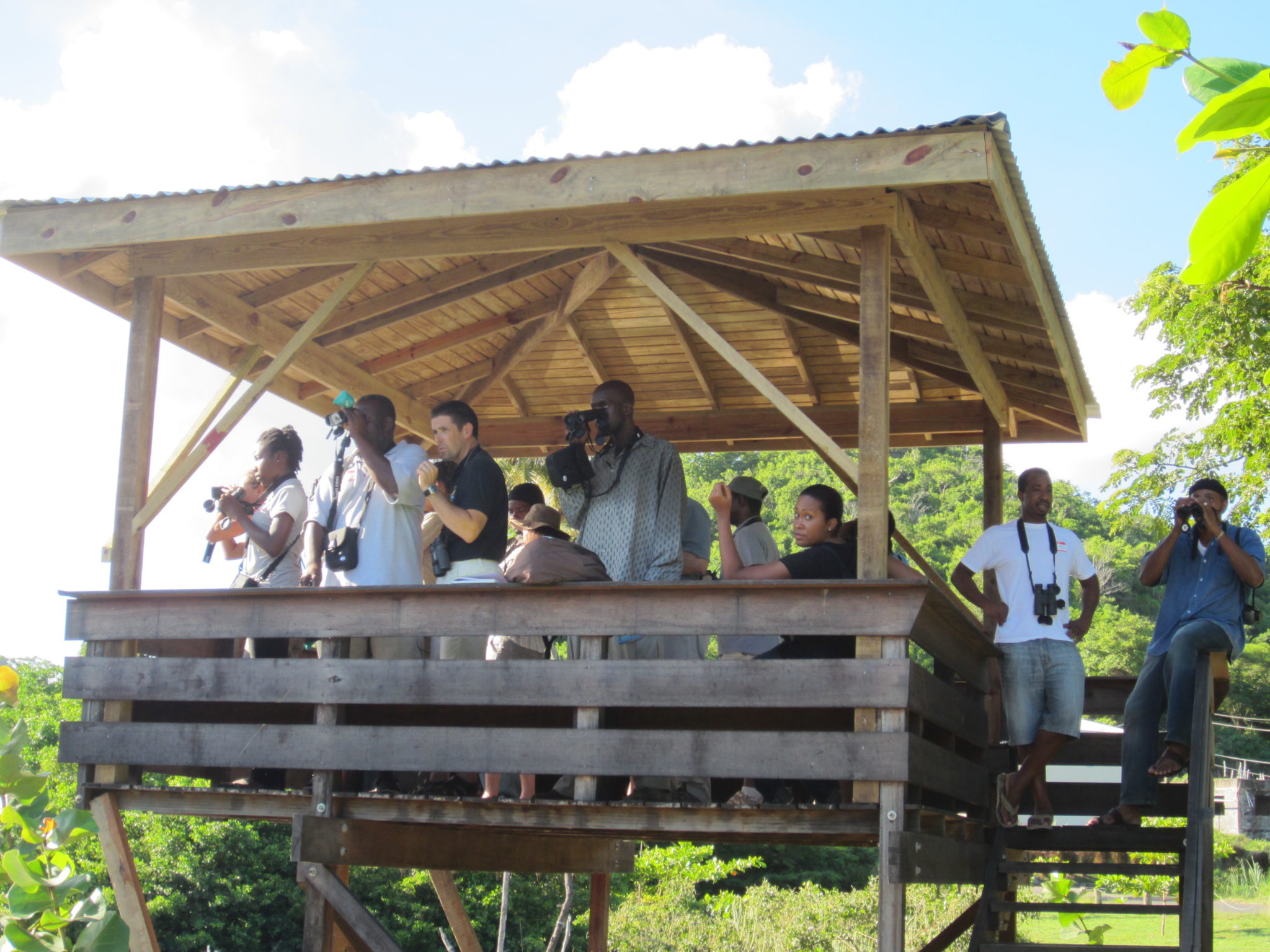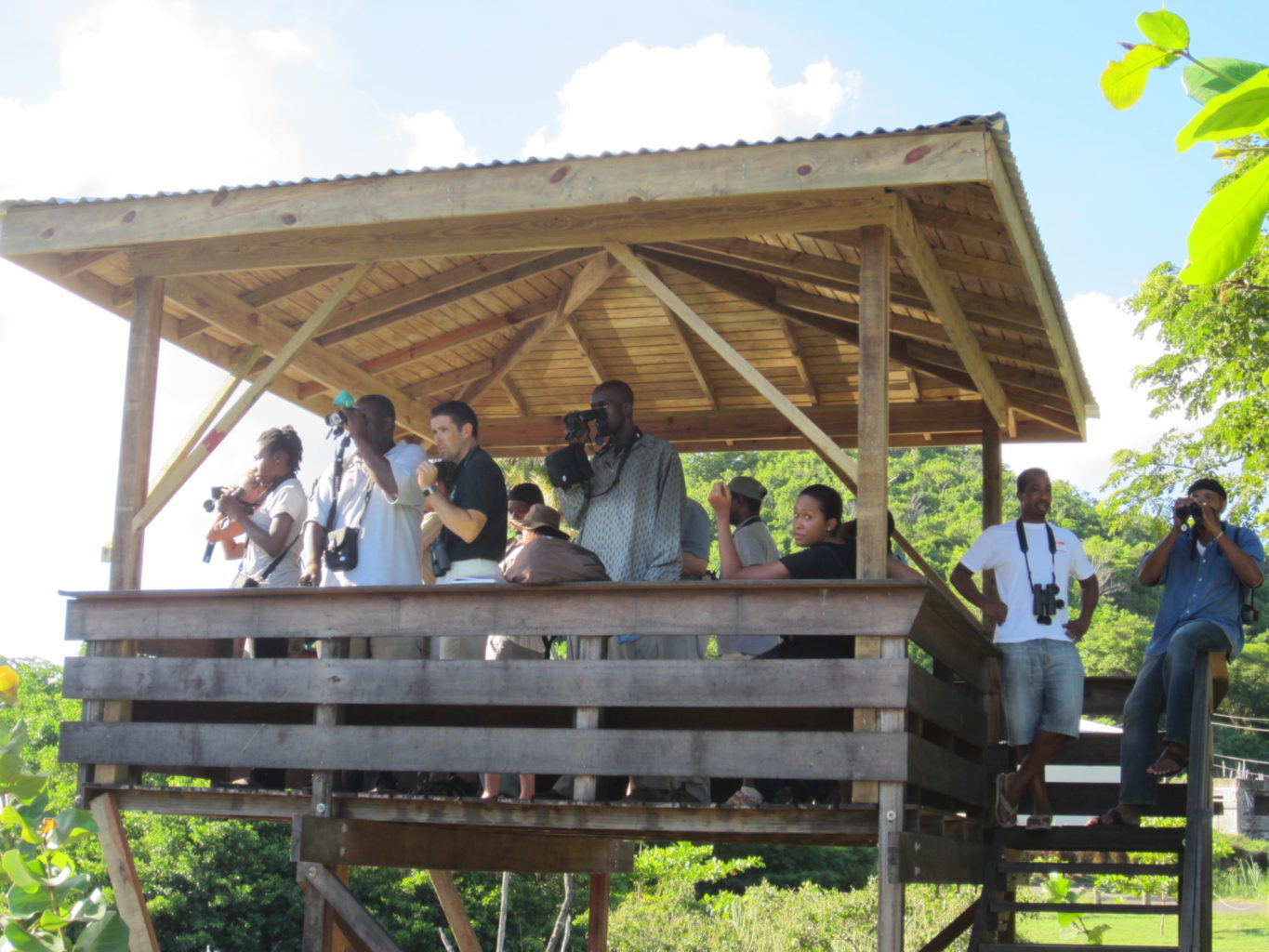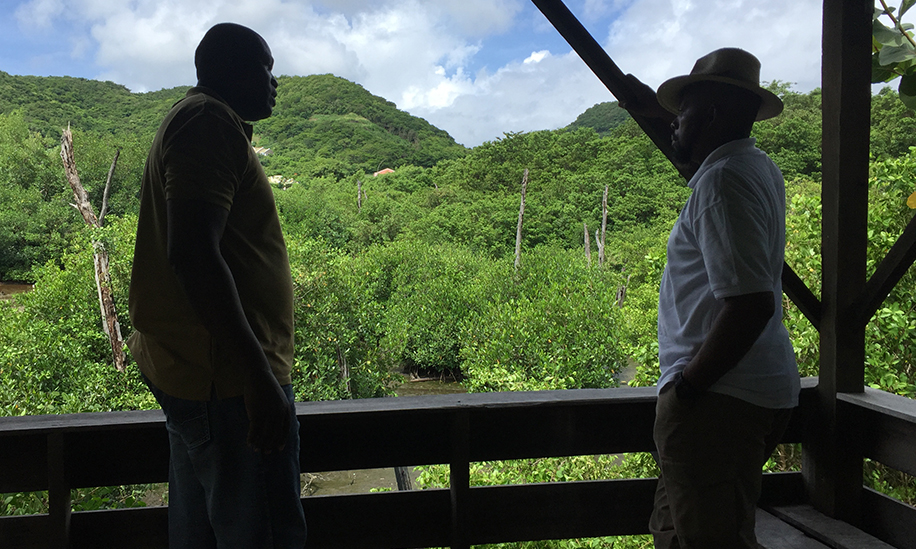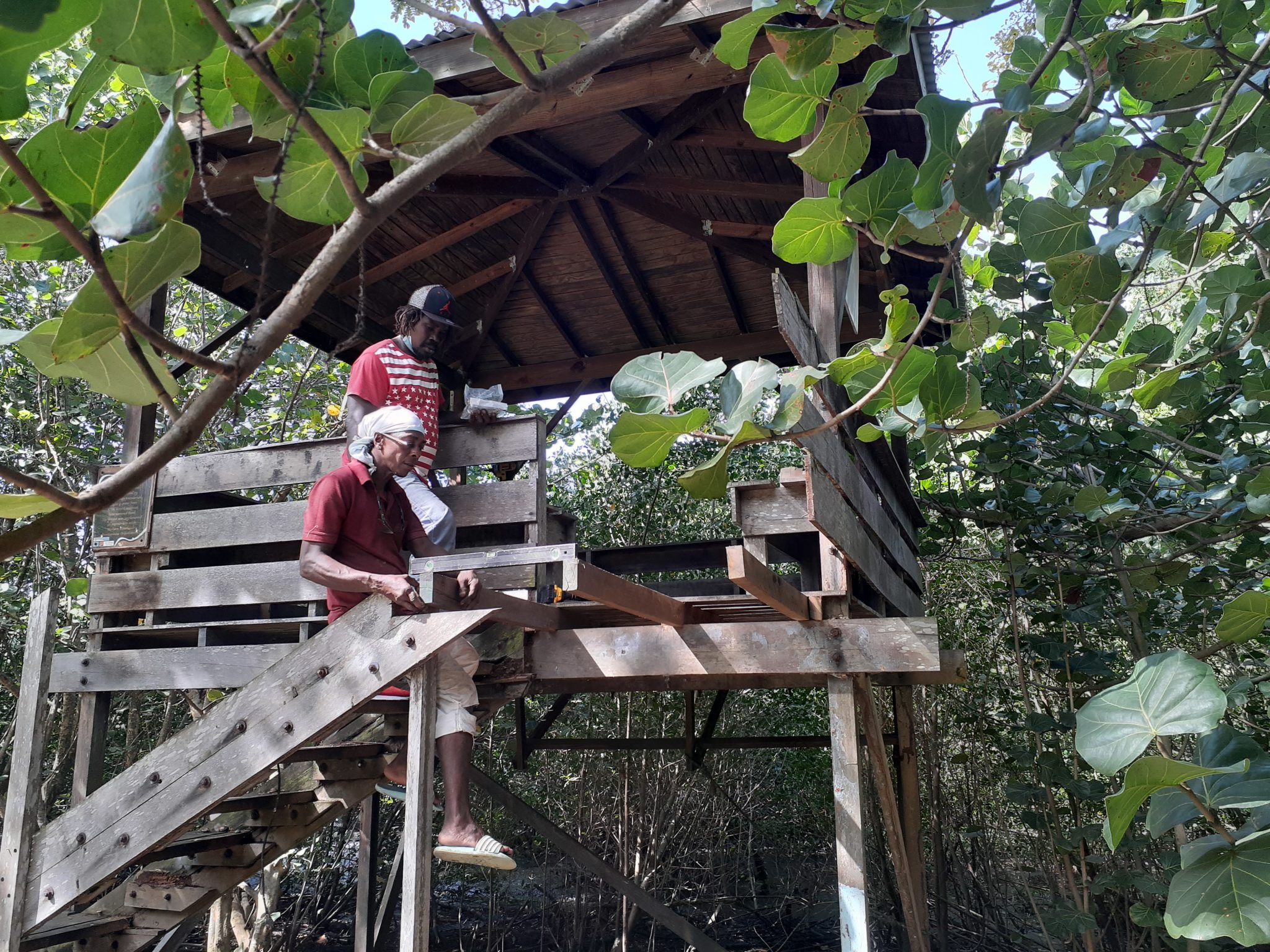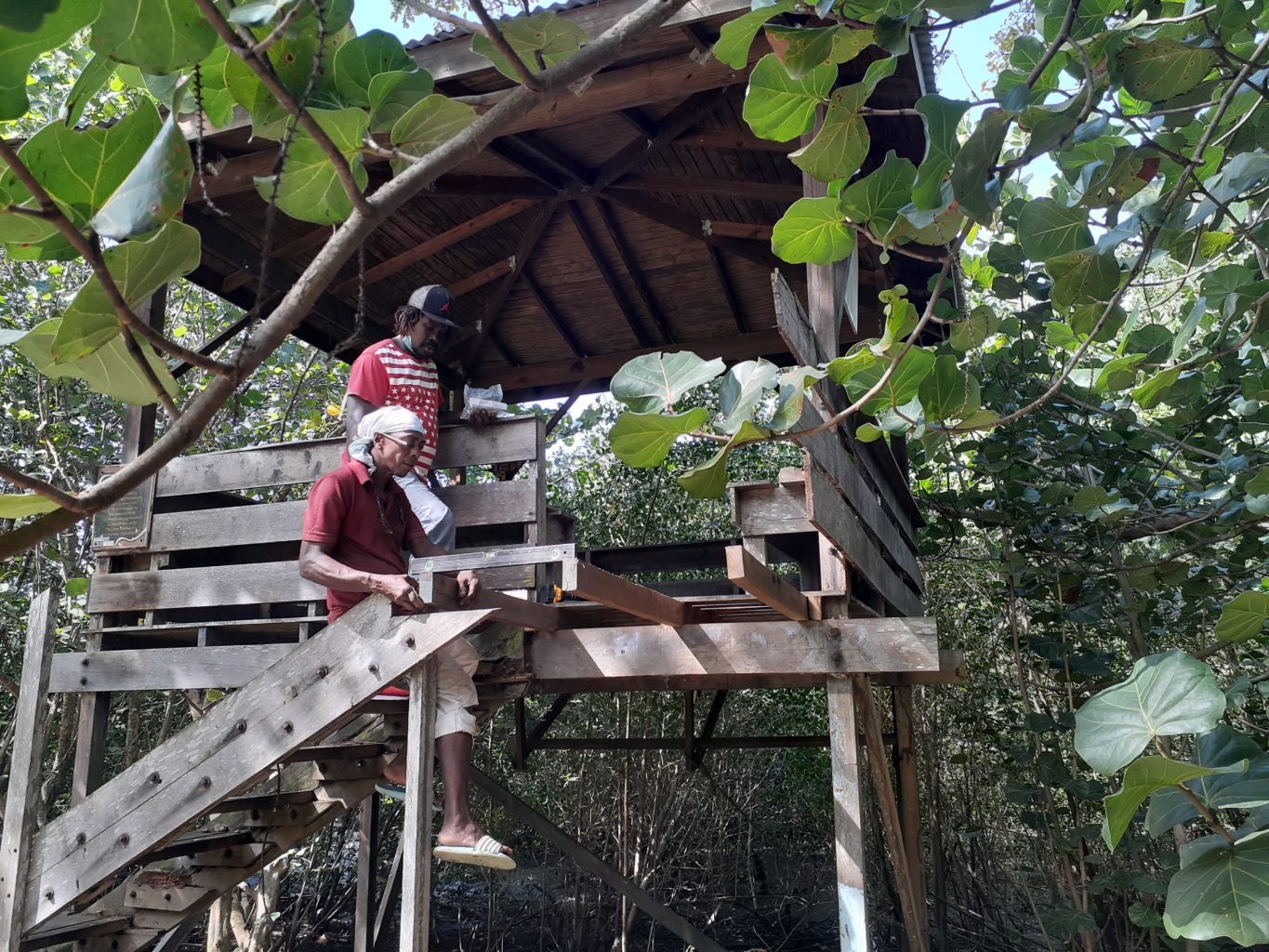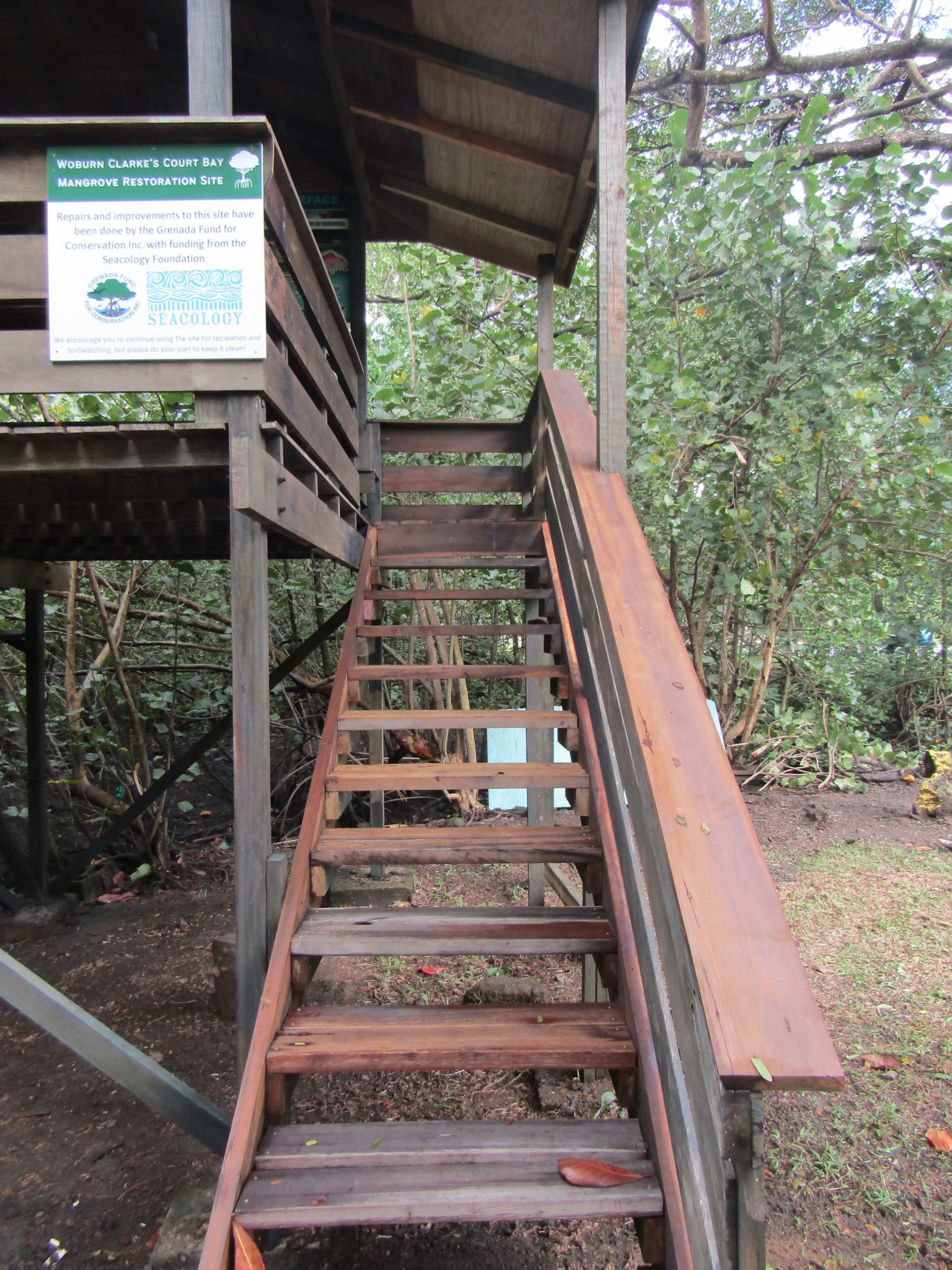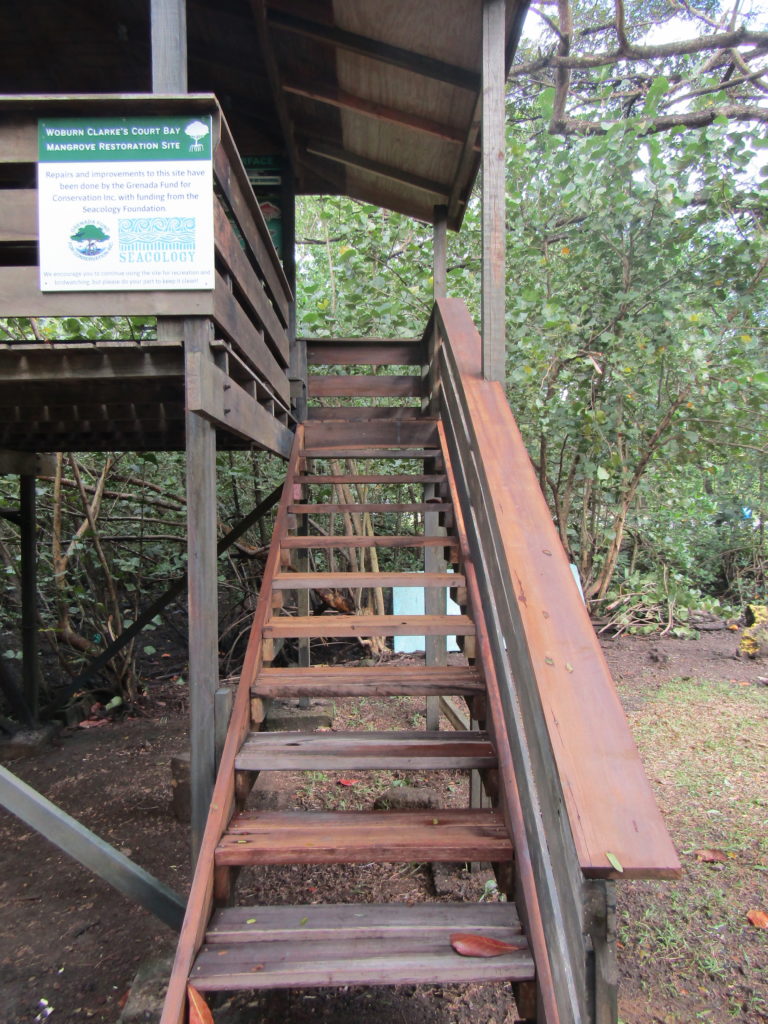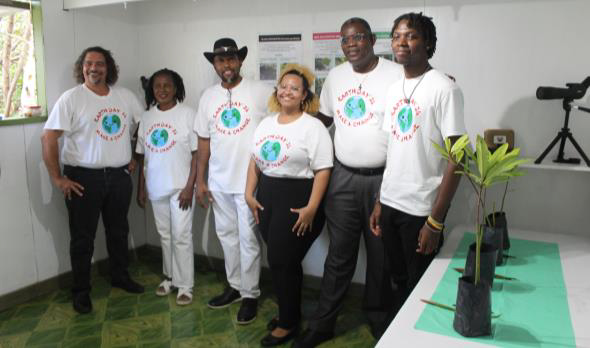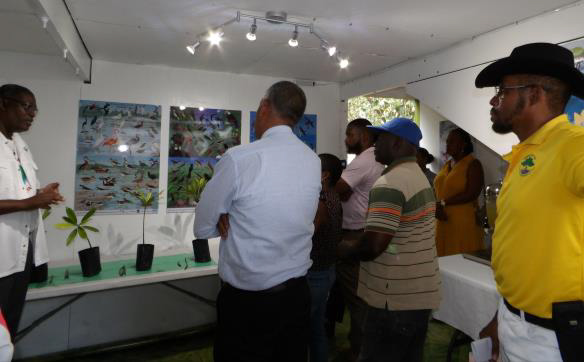The largest intact mangrove ecosystem in Grenada lies within the Woburn Clarkes Court Bay Marine Protected Area. The mangroves protect more than three miles of coastline from erosion and critical habitat for commercial fish species. They also provide nesting, roosting, and feeding areas for resident and migratory birds. Native iguanas, snakes, and a variety of other terrestrial wildlife are also found there.
The MPA is under the jurisdiction of Grenada’s fisheries and forestry departments, but neither agency assigns rangers to the protected area. That means that the efforts of the nonprofits Grenada Fund for Conservation and the Woburn Woodlands Development Organization are crucial. These organizations conduct programs that clean up trash, teach local and national audiences about mangroves, and replant mangroves.
A 2011 Seacology project protected mangroves here and funded viewing towers, where visitors can see birds and other wildlife. Since then, the mangroves have grown impressively. In fact, the tower is no longer very good for birdwatching, because the trees are almost as tall as the tower. The government has tackled this problem by trimming the trees, but this approach damages the mangroves and helps only temporarily.
This project provides a more sustainable solution, which also encourages wildlife-based tourism and environmental education, by:
Repairing the old platform. After ten years of heavy use by birdwatchers, school groups, and community members, the platform needs new supports, stair treads, and railings.
Replacing old interpretive materials. Weathered signs are being replaced by new panels that describe the forest’s bird community and give general information.
Building a new viewing platform. A floating platform along the shoreline, at a natural break in the mangroves, will offer a better vantage for birdwatching and can be used regardless of tides and weather.


